
The Norwegian campaign involved the attempt by Allied forces to defend northern Norway coupled with the resistance of the Norwegian military to the country's invasion by Nazi Germany in World War II.
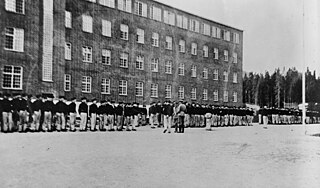
Grini prison camp was a Nazi concentration camp in Bærum, Norway, which operated between 1941 and May 1945. Ila Detention and Security Prison is now located here.

Vardøhus Fortress is located in Vardø Municipality in Finnmark county, Norway. It is located in the town of Vardø on the island of Vardøya on the Barents Sea near the mouth of the Varangerfjord in northeastern Norway near the Russian border.
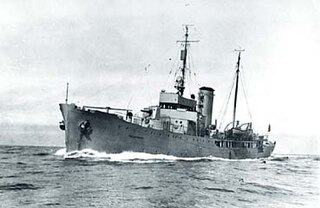
Fridtjof Nansen was the first ship in the Norwegian armed forces to be built specially to perform coast guard and fishery protection duties in the Arctic. She saw service in the Second World War with the Royal Norwegian Navy until she ran aground on an unmarked shallow at Jan Mayen in November 1940.
Hans Julius Gabrielsen was a Norwegian jurist and politician for the Liberal Party. He is best known as County Governor of Finnmark and County Governor of Oppland, as well as Consultative Councillor of State for Finnmark Affairs in 1945.
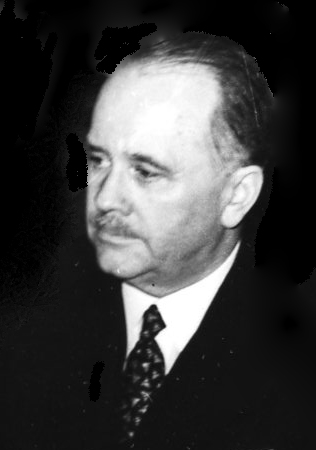
Erling Sandberg was a Norwegian banker and politician.

HNoMS Odin was a Sleipner-class destroyer that entered service with the Royal Norwegian Navy in 1939. She and the other Sleipner-class vessels were built as part of a Norwegian rearmament scheme in the last years leading up to the Second World War. In 1940, she had taken part in protecting Norwegian neutrality, before being caught in the German invasion of Norway on 9 April 1940. After fighting the invasion forces at Kristiansand, she was captured and pressed into Kriegsmarine service for the duration of the war. After the end of the war, she was returned to Norway. In 1948, she and her surviving sister ships were converted to frigates and remained in service until sold for scrapping in 1959.

The Battle of Dombås was fought between Norwegian Army infantry forces and German Fallschirmjäger paratroops in mid-April 1940. As part of their conquest of Norway south of Trondheim, and as a countermeasure against reported Allied landings in the Romsdal area of south-western Norway, the Germans dropped a company of paratroopers near the vital railroad junction of Dombås on 14 April 1940. For the next five days, the German force blocked the Dovre Line railroad line between Oslo and Trondheim, as well as the main road between the two cities.

HNoMS Honningsvåg was a naval trawler that served throughout the Second World War as a patrol boat in the Royal Norwegian Navy. She was launched at the North Sea harbour of Wesermünde in Hanover, Germany in February 1940 as the fishing trawler Malangen and was captured by Norwegian militiamen at the North Norwegian port of Honningsvåg during her maiden fishing journey to the Barents Sea. Having taken part in the defence of Norway in 1940 she spent the rest of the war years patrolling the ocean off Iceland. She was decommissioned in 1946, sold to a civilian fishing company in 1947 and scrapped in 1973.
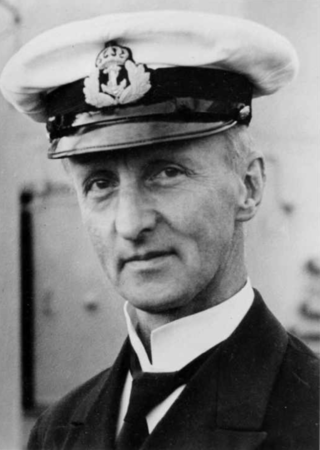
Odd Isaachsen Willoch was a Norwegian naval officer who commanded one of the two coastal defence ships defending Narvik during the German invasion of Norway on 9 April 1940.
Alfred Schulze-Hinrichs was a Kapitän zur See with the Kriegsmarine during World War II and a recipient of the Knight's Cross of the Iron Cross.

SS Barøy was a 424-ton steel-hulled steamship delivered from the Trondhjems mekaniske Værksted shipyard in Trondheim in 1929. She had been ordered by the Norwegian shipping company Ofotens Dampskibsselskab for the local route from the port city of Narvik to the smaller towns of Lødingen and Svolvær. After the company suffered ship losses in the 1940 Norwegian Campaign Barøy was put into Hurtigruten service on the Trondheim–Narvik route. She was sunk with heavy loss of life in a British air attack in the early hours of 13 September 1941.
Odd Lindbäck-Larsen was a Norwegian military officer and war historian. He participated in the Norwegian Campaign in Northern Norway during the Second World War as the chief-of-staff, under general Fleischer. He spent most of the war in Norwegian and German concentration camps. He continued his military career after the war, eventually with the rank of major general and military attaché in Stockholm. He wrote several books on Norwegian military history.

Empire Endurance was a 8,514 GRT steam cargo liner that was built in 1928 as Alster by Deschimag Werk Vulkan, Hamburg, Germany for the shipping company Norddeutscher Lloyd. In the years leading up to the Second World War Alster carried cargo and passengers between Germany and Australia. After the outbreak of war she was requisitioned by the Kriegsmarine for use as a supply ship.

Turtagrø is a hotel in the municipality of Luster in Vestland county, Norway, near Hurrungane in Jotunheimen. The hotel has been a central meeting place for mountaineers from the late 1800s.
Kristian Rikardsen Løken was a highly decorated Norwegian military officer who served in the Belgian Force Publique from 1907 to 1917, fighting German colonial forces in East Africa from 1914 to 1917, and went on to command a Norwegian Army infantry brigade during the 1940 Norwegian campaign of the Second World War.

SS Nordnorge was a Norwegian steamship built in 1923–24 by Trondhjems mekaniske Værksted, for the Narvik-based Norwegian shipping company Ofotens Dampskibsselskap. First employed on the company's Narvik-Trondheim route, she was transferred to the longer Hurtigruten route in late 1936. Seized by the Germans following their April 1940 attack on Norway, she was used as covert troop ship and was sunk shortly after delivering her cargo of German troops behind Allied lines on 10 May 1940.
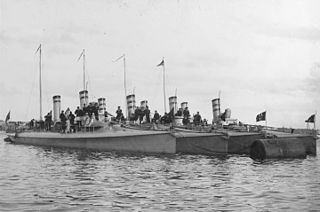
HNoMS Brand was a 1.-class torpedo boat constructed in 1898. She served the Royal Norwegian Navy for more than four decades, including neutrality protection duties during the First World War. Having once again been employed on neutrality protection duty at the outbreak of the Second World War, Brand was captured by the Germans during their invasion of Norway in April 1940.
Håkon Evjenth was a Norwegian jurist, non-fiction writer, short-story writer and children's writer. He is probably best remembered for his children's books.
Niels Larsen Bruun was a Norwegian officer who served in the Royal Norwegian Navy for more than four decades. Bruun took part in neutrality protection duties during the First World War, seeing service on several naval vessels and assuming his first command. He continued his service in the inter-war years, teaching at naval schools in addition to shipboard service.















